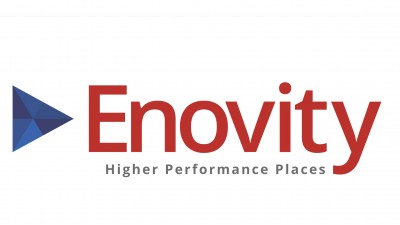Property Managers Who Integrate Energy And Facilities Management Realize Big Bottom-Line Benefits

Property managers face constant pressure to reduce operating costs, and implement energy management and facilities management initiatives to improve the net operating income of their buildings.
Enovity, a firm of engineers engaged by managers for deep expertise in energy and facilities management, finds programs targeting these domains are often deployed independently of one another, passing up powerful synergies that can be achieved by marrying facility management and energy management efforts.
In light of this, Enovity conducted a formal investigation probing the breadth and magnitude of neglected cost-saving efficiencies from not following an integrated approach.
The firm also looked at operating and financial benefits for the firms that have successfully combined facilities and energy management, and the strategies of these firms.
For the study, Enovity commissioned independent analyst firm Verdantix to interview 100 energy, facilities and real estate executives nationwide.
Respondents were asked how energy and facilities processes are managed within their organizations, what barriers stand between current practices and the next level of performance, and the returns they are realizing from merging the two.
The results showed executives are generally already attempting to integrate facilities management and energy management, but the range of tactics and consequent levels of success varied tremendously.

How company leaders felt they integrated energy and facilities management
Almost half of the respondents reported they are already reaping the benefits of connecting the two. These leading firms enable collaboration between different teams and use data platforms that bring energy and facilities data streams together.
While the development, availability and adoption of new platforms tailored to energy management and facilities management have undoubtedly helped firms, Enovity found properly training people to leverage these systems is critical to maximizing their efficacy.
One firm Verdantix surveyed uses a smart building system that incorporates Fault Detection and Diagnostics to help its people make informed decisions regarding equipment upgrades based on the payback from energy and maintenance spends, which often represent comparable dollar values.
The other half of respondents face a number of barriers to unified facilities management and energy management. Among these are
- Scarcity of staff resources and attrition of experienced and trained staff;
- Departmental and data system silos;
- Lack of documented energy management and/or facility management strategy; and
- Dearth of data to manage energy performance.

How company leaders think they can improve the integration of facilities and energy management
Enovity’s analysis also revealed a disconnect in outsourcing strategies. Facilities management services are much more heavily outsourced — 42% of respondents outsourced building maintenance, while 11% outsourced energy management at the time of the study.
The three main takeaways for CRE pros?
- The benefits of integration are real, measurable and potentially significant.
- Technological solutions alone are not enough to capture them all.
- Firms serious about energy management must infuse it in their outsourcing strategy with creative solutions like holding outsourced facilities management service providers accountable for energy performance.
"More and more, developers are seeing the NOI impact of energy and facility management strategies — keeping building occupants happy while improving the bottom line — particularly in California’s major markets,” said Chris Hazen, Enovity’s director of corporate development, who oversaw the research effort.
“However, we also see most companies still on the learning curve, and we find that the most cost-effective approach to integrating these functions varies by developer and by project.”
To learn more about this Bisnow content sponsor and download the full research report, click here.

